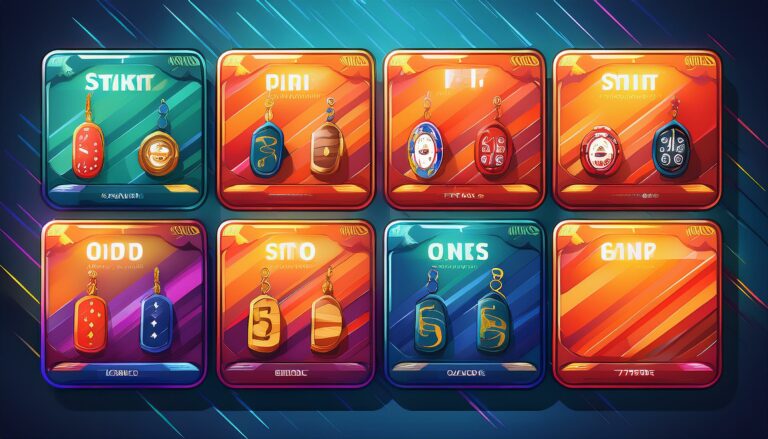Cricket and Sustainable Transportation: Eco-friendly Solutions
Online Cricket ID, 11xplay: Sustainable transportation plays a vital role in the realm of cricket, where matches and events often entail significant movement of teams, officials, and spectators. The environmental impact of traditional transportation methods, such as gas-guzzling vehicles and high-emission transport modes, cannot be overlooked. As the world emphasizes sustainability and eco-conscious practices, the integration of greener transportation alternatives has become a pressing need for the cricketing community.
Recognizing the importance of reducing carbon footprints and promoting eco-friendly initiatives, the adoption of sustainable transportation in cricket serves as a proactive step towards minimizing environmental harm. By opting for greener modes of travel, the cricketing industry can showcase its commitment to sustainability while inspiring fans and followers to embrace responsible practices. Embracing sustainable transportation not only aligns with global efforts to combat climate change but also highlights the transformative power of environmentally conscious decisions in the sporting world.
The Environmental Impact of Traditional Transportation Methods in Cricket
Traditional transportation methods in cricket, such as multiple individual vehicles for players and staff, contribute significantly to carbon emissions and air pollution. The heavy reliance on cars and buses leads to congestion around cricket venues, further exacerbating environmental concerns. In addition, the transportation of equipment, food, and fans to and from matches utilizing non-sustainable methods further adds to the overall environmental impact of cricket events.
Moreover, the long distances traveled by teams and spectators using conventional transportation options result in a higher carbon footprint for cricket matches. The vast network of logistics involved in organizing games, including the transportation of players, officials, and equipment, adds to the environmental strain. As a result, it is crucial for stakeholders in cricket to recognize the detrimental effects of traditional transportation methods on the environment and explore more sustainable alternatives to minimize the ecological footprint of the sport.
Eco-friendly Solutions for Transportation in Cricket Matches
Cricket matches often require extensive transportation for teams, officials, and equipment, leading to environmental concerns due to carbon emissions and pollution. To address this issue, eco-friendly solutions have been introduced in the form of electric vehicles, bicycles, and public transport. By opting for these sustainable modes of transportation, cricket events can significantly reduce their carbon footprint and contribute to a cleaner environment.
Additionally, promoting carpooling among players, staff, and fans can further enhance eco-friendly transportation practices in cricket. Encouraging individuals to share rides not only reduces the number of vehicles on the road but also fosters a sense of community and teamwork. Implementing designated carpooling areas and offering incentives for carpooling can encourage more people to embrace this environmentally conscious approach to transportation in cricket matches.
Benefits of Using Sustainable Transportation Options in Cricket Events
Utilizing sustainable transportation options in cricket events brings about numerous advantages. Firstly, it significantly reduces carbon emissions and air pollution, contributing to a cleaner and healthier environment for players, spectators, and the surrounding community. By choosing eco-friendly modes of transportation such as electric vehicles or promoting carpooling and public transport, cricket events can minimize their carbon footprint and mitigate their impact on the environment.
Secondly, embracing sustainable transportation options in cricket leads to enhanced public perception and goodwill. By demonstrating a commitment to environmental responsibility, cricket events can attract a more environmentally conscious audience and appeal to sponsors and partners who prioritize sustainability. This positive image can also help in building a strong reputation for the event and the teams involved, fostering long-term support and engagement from stakeholders and fans alike.
Innovative Technologies for Eco-friendly Cricket Transportation
Innovative technologies are revolutionizing the way cricket transportation is being managed, offering sustainable solutions to reduce the environmental impact of the sport. Electric vehicles, including buses and shuttles, are being increasingly utilized to transport players, officials, and fans to and from cricket matches. These zero-emission vehicles not only reduce greenhouse gas emissions but also contribute to a cleaner and healthier environment around cricket venues.
Furthermore, the integration of smart transportation systems, such as real-time tracking and optimized route planning, is improving the efficiency of cricket transportation. By harnessing data analytics and digital technologies, cricket organizers can better manage traffic flow, minimize congestion, and enhance the overall spectator experience. These innovations not only promote eco-friendly practices in cricket transportation but also pave the way for a more sustainable future for the sport.
Case Studies of Successful Implementation of Sustainable Transportation in Cricket
One successful case study of implementing sustainable transportation in cricket is the use of electric vehicles during an international cricket tournament in Australia. The organizers partnered with a local electric vehicle company to provide shuttle services for players, officials, and spectators. This initiative not only reduced carbon emissions but also promoted the adoption of eco-friendly transportation options in major sporting events.
Another noteworthy case study comes from India, where a cricket stadium in a metropolitan city introduced bicycle-sharing services for fans attending matches. By setting up docking stations near the stadium and promoting cycling as a convenient mode of transportation, the stadium management successfully decreased the congestion caused by traditional vehicles during match days. This initiative not only supported sustainability goals but also encouraged a healthier and active lifestyle among cricket enthusiasts.
Challenges and Barriers to Adopting Eco-friendly Transportation in Cricket
Implementing eco-friendly transportation in cricket faces several challenges and barriers that hinder its widespread adoption within the sport. One of the primary obstacles is the lack of awareness and education among stakeholders regarding the importance of sustainable transportation practices and their environmental benefits. Without clear understanding and support from key decision-makers, the implementation of eco-friendly transportation solutions remains a challenging task.
Additionally, the existing infrastructure in cricket stadiums and venues may not always be conducive to the integration of sustainable transportation options. Limited parking spaces, inadequate facilities for cyclists and pedestrians, and lack of efficient public transportation connections can pose significant barriers to promoting eco-friendly transportation methods during cricket events. Overcoming these infrastructure challenges requires substantial investments in upgrading existing facilities and designing new transportation solutions tailored to the specific needs of cricket matches and tournaments.
Collaborative Efforts to Promote Sustainable Transportation Practices in Cricket
Collaborative efforts play a pivotal role in promoting sustainable transportation practices within the realm of cricket. By bringing together various stakeholders such as cricket associations, event organizers, transportation companies, and environmental NGOs, a more comprehensive approach towards eco-friendly transportation solutions can be attained. Through partnerships and mutual cooperation, innovative strategies and initiatives can be developed to reduce the carbon footprint associated with cricket events.
Furthermore, the collective effort of these diverse entities can lead to greater awareness and education on the importance of sustainable transportation in cricket. By working together towards a common goal, the message of environmental responsibility can be effectively communicated to players, fans, and the wider community. This synergy of collaboration fosters a culture of sustainability within the cricketing world and sets a positive precedent for future sporting events to follow suit.
Heading 9: Future Trends in Sustainable Transportation for Cricket Matches
As the world shifts towards a more sustainable future, the realm of cricket transportation is also adapting to eco-friendly practices. Looking ahead, we can expect to see an increase in the use of electric vehicles and bicycles for moving players and equipment to and from venues. These modes of transportation not only reduce carbon emissions but also promote a healthier lifestyle for players and staff.
Moreover, innovative technologies such as autonomous vehicles and drones are poised to revolutionize the way cricket logistics are handled. With the potential to streamline transportation processes and reduce the overall carbon footprint, these futuristic solutions hold promise for the future of sustainable travel in cricket. As the sport continues to evolve, incorporating these cutting-edge technologies will play a crucial role in minimizing environmental impact and promoting a greener approach to transportation.
Heading 10: Recommendations for Promoting Eco-friendly Solutions in Cricket Transportation
One key recommendation for promoting eco-friendly solutions in cricket transportation is to prioritize the use of electric vehicles or other low-emission modes of transport for players, staff, and spectators. By investing in electric cars, buses, or bikes, cricket events can greatly reduce their carbon footprint and contribute to a more sustainable environment. Additionally, encouraging carpooling or providing incentives for using public transportation can also help minimize the overall impact of transportation in cricket matches.
Another important recommendation is to implement a comprehensive waste management plan that focuses on reducing, reusing, and recycling materials used during cricket events. By promoting the use of compostable or biodegradable items such as food containers and utensils, cricket venues can significantly cut down on waste production and promote a more environmentally friendly approach. Furthermore, educating both attendees and staff on the importance of proper waste disposal and recycling practices can lead to a more sustainable culture surrounding cricket transportation.






